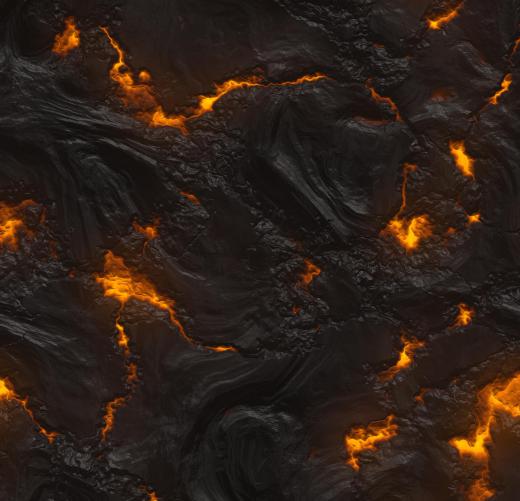What Was the Hadean Eon?
 Michael Anissimov
Michael Anissimov
The Hadean eon refers to the earliest geological epoch of Earth’s history, from the formation of the planet about 4.5 billion years ago, to the beginning of the Archean period, 3.8 billion years ago. The name “Hadean eon” is derived from the word Hades, the Greek word for Hell or “unseen”. It is commonly thought that the Hadean landscape was a lava-filled, meteorite-bombarded, lifeless place, but some scientists believe that this characterization is somewhat of an exaggeration, and that at least around the end of the Hadean eon, the Earth wasn’t as hellish as some might think. The fact is that we have relatively scarce evidence about the conditions on Earth at that time, relative to any other era.
The beginning of the Hadean eon was certainly a harsh place. It is when the Earth was nothing but a condensed portion of the accretion disk that made up the early Solar System. Over millions of years, this condensed portion started to chunk together by the mutual attraction of gravity, and a primitive proto-Earth was formed. Over a period of hundreds of millions of years, until about 4,100 million years ago, the Earth was quite hot. Convection and subduction churned the surface of the planet, creating a planetwide froth of magma. Heavier elements, like iron, lead, and iridium, sunk deep below the surface of the planet, forming its core. Lighter elements, such as gasses, rose to the top in spectacular outgassing events. The surface of the Earth was composed of silicates, which floated on top of the magma seas. Somewhere around the late-to-middle portion of the Hadean eon, the Earth began to cool and the outlines of the continents form. The atmosphere still lacked oxygen at this point.

An important event happened early in the Hadean eon, around 4.5 billion years ago. The Earth was significantly smaller then, until it was impacted by a Mars-sized body known as Theia. This impact vaporized a huge portion of the crust, and sent many quadrillions of tons of material out into outer space, which hung around in the form of rings for a few million years, until these rings condensed into the body we now call the Moon.

Shortly after the Earth cooled, primitive life began, sometime around four billion years ago. It is really remarkable how rapidly the first primitive cells appeared after the Earth cooled down. There is even some cursory evidence, traces of organic carbon in strata, that suggest photosynthetic organisms may have appeared around this time, around half a billion years earlier than previously thought. However, more evidence is needed to confirm this.
Around the end of the Hadean eon, the Earth — and other planets in the inner Solar System — were subjected to a 300 million year event called the Late Heavy Bombardment. During this time, the number of asteroid and comet impacts increased greatly. Scientists are not sure why. It is worth noting that while the Late Heavy Bombardment signified a greatly increased number of impacts over what we see today, the time interval between large impacts could still be measured in centuries or millennia. Around this time, life had to function in an all CO2 atmosphere, oxidizing inorganic materials for energy. Around the conclusion of the Hadean eon, primitive prokaryotic cells developed glycosis, a process for oxidizing organic molecules which set the foundation for modern life.
AS FEATURED ON:
AS FEATURED ON:












Discuss this Article
Post your comments